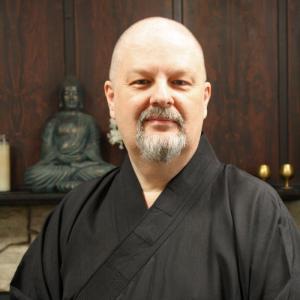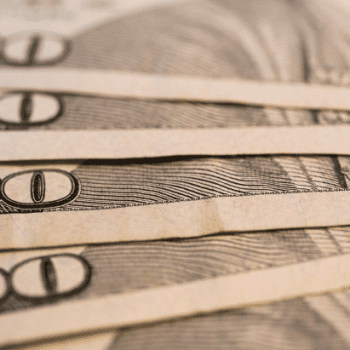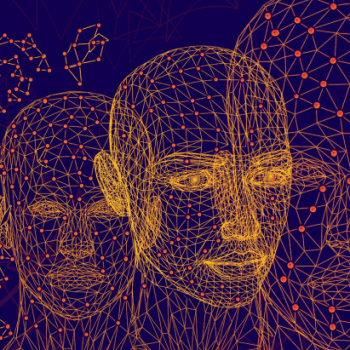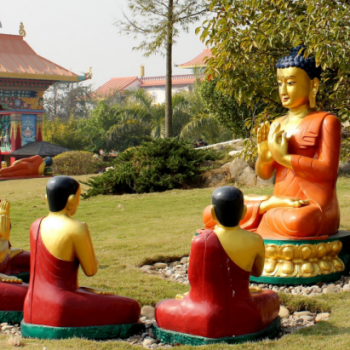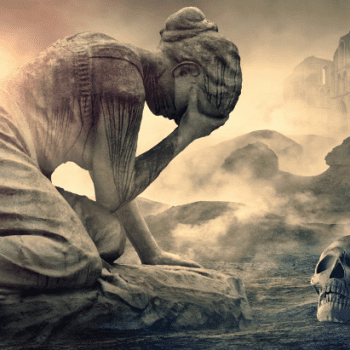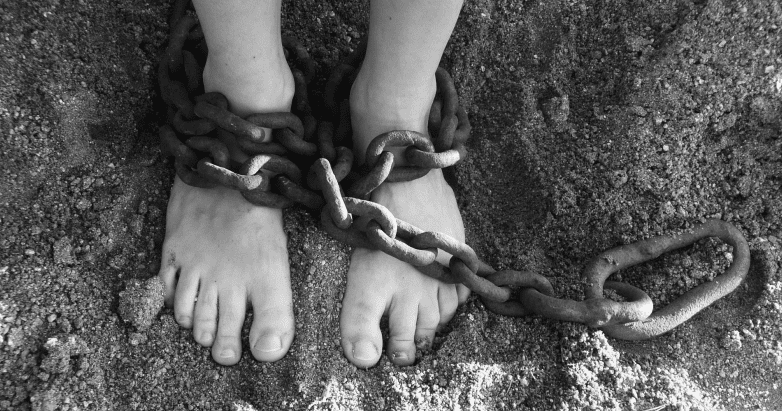
The Buddha said:
“Practitioners, this prison of rebirth has no known beginning. No starting point is found for the journey of sentient beings through endless rebirths, hindered by ignorance and chained by craving” (SN 15.1).
Now people in the West think of rebirth and reincarnation as a great thing. According to the Buddha, it is anything but good. It is the essence of the problem. We are stuck in an endless cycle of birth, suffering, sickness, old age, and death.
Introducing Samsara
“The Buddha,” writes Bhikkhu Bodhi, “teaches our individual lifespan to be merely a single phase within a series of rebirths that has been proceeding without any discernible beginning in time. This series of rebirths is called samsara, a Pali word which suggests the idea of ‘directionless wandering’” (24).
I have chosen to translate the Pali word samsara as “prison of rebirth.” This is not a literal translation. The Princeton Dictionary of Buddhism says that samsara is “wandering” and is referring to the “cycle of rebirth.” But you don’t get the full connotation from that. Too many in the West think rebirth is a good thing. But samsara is not a good thing.
Nyanatiloka Bhikkhu, in his Buddhist Dictionary, explains that samsara, the “round of rebirth,” is the “name by which is designated the sea of life ever restlessly heaving up and down, the symbol of the continuous process of ever again and again being born, growing old, suffering and dying…. This frightful chain of rebirths….” Here he catches the feel of the word samsara, a “frightful chain.” The Encyclopedia of Buddhism agrees and calls it “the chain of samsara.”
You can now begin to see where I get the translation “prison of rebirth” from. It is a dynamic equivalent of the Pali word samsara. As Bhikkhu Bodhi says, “we are bound to a chain of rebirths, bound to it by nothing other than our own ignorance and craving” (24). Notice the words being used. Samsara is a “chain” that we are “bound to.”
“Samsara,” writes Dzongsar Jamyang Khyentse, “is a kind of mental trap” (72). A trap is “something by which one is caught or stopped unawares,” also “a position or situation from which it is difficult or impossible to escape” (Merriam-Webster.com). The Buddha proved that “escape” was possible, but it isn’t easy.
A Concise Dictionary of Buddhism and Zen explains, “Imprisonment in samsara is conditioned by three ‘unwholesome roots’.” The three unwholesome roots are attachment, aversion, and delusion. These are also known as the three poisons. Notice the word used to describe samsara, “imprisonment.” No other word better expresses the reality of samsara than “prison.”
.
By referring to samsara as the “prison of rebirth”, the word nirvana begins to make more sense. I translate nirvana as “full liberation.” This begins to paint a more accurate picture of Buddhism. You are in the prison of rebirth and you want to attain “full liberation” from this prison. The whole situation is completely unsatisfactory, which is the first noble truth.
The First Noble Truth
The Buddha said:
“Now this is the noble truth of unsatisfactoriness. Rebirth, old age, sickness, and death are unsatisfactory. Association with the disliked and separation from the liked is unsatisfactory. Not getting what you want is unsatisfactory. In brief, the five mind-body processes subject to grasping are unsatisfactory” (SN 56.11).
It is unfortunate that so many translators choose to translate the Pali word dukkha as “suffering.” Suffering is part of it, but it is actually the endless births and deaths that is the real problem the Buddha was addressing. The word “unsatisfactoriness” catches this best. In slang, we would say that we got a bad deal, a bad trip, that this sucks and is a real bummer. That is what the first noble truth is trying to get at.
Lessons from the Matrix
Maybe the Matrix movie can help us feel the reality we are in. I am going to quote Morpheus word for word, but I am going to substitute the word samsara for the word Matrix. See what happens.
Morpheus says to Neo, “Samsara is everywhere. It is all around us. Even now, in this very room. You can see it when you look out your window or when you turn on your television. You can feel it when you go to work … when you go to church … when you pay your taxes. It is the world that has been pulled over your eyes to blind you from the truth.” Neo asks, “What truth?” Morpheus continues, “That you are a slave, Neo. Like everyone else, you were born into bondage. Born into a prison that you cannot smell or taste or touch. A prison for your mind.”
Samsara is a prison for your consciousness. You are stuck in the prison of rebirth, doomed to be born, grow old, suffer, and die, and to do it, over and over and over again. Your heart has broken untold times, you have lost loved ones, again and again, died many horrible deaths, experienced torments in lower realms, and keep on repeating the cycle without beginning or end. Full awakening is the only way out.
Let’s look at another quote from Morpheus. He said, “Unfortunately, no one can be told what samsara is. You have to see it for yourself.” This is true. If you buy into the naturalistic idea that the natural world is all there is, then samsara makes no sense. Nirvana as “full liberation” also makes no sense. Buddhism has to be diluted into a mere psychotherapy for inner peace. This is fine, but so shallow.
People want to argue about rebirth, about the reality of samsara. But as Morpheus said, “no one can be told what Samsara is. You have to see it for yourself.” This is why the Buddha said, “don’t argue with anyone in the world” (SN 22.94). Arguments move people away from reality into the mental world of symbols and signs. If you don’t have the experience, the word becomes an indecipherable hieroglyphic. It is a symbol without substance.
Ignorance and Craving
The saddest thing about this prison of rebirth is that we are our own jailer. As the Buddha said, we are “hindered by ignorance and chained by craving” (SN 15.1). We can’t blame a God, an angel, or a demon for our predicament. We have formed our chains and fastened our fetters.
By saying we are “hindered by ignorance,” the Buddha is not saying we are stupid or uneducated. Rather, ignorance means that we live ignoring the true nature of reality. We don’t see that all things are impermanent, unsatisfactory, and insubstantial. And so by not seeing we remain in the dark.
And because we are in the dark about reality, we don’t realize that we are “chained by craving.” Ignorance keeps us blind, craving keeps us imprisoned. We struggle against the chains, which only tighten their grip. We strengthen our craving by pursuing more and more pleasure. The more we crave, the less we see. Our craving pulls our attention away from the way things really are.
There is Something Wrong with the World
I want to return to the Matrix movie. To again quote Morpheus, “You’re here because you know something. What you know you can’t explain, but you feel it. You’ve felt it your entire life, that there’s something wrong with the world. You don’t know what it is, but it’s there, like a splinter in your mind, driving you mad. It is this feeling that has brought you to me. Do you know what I’m talking about?”
I know what Morpheus is talking about. I have felt it my whole life. There is something wrong with the world, there is something wrong with us. We are selfish and cruel and confused. Look at our politics. Look at the harm we are doing to the environment, the torture of animals, the abuse of little children. Something is wrong with the world, something is wrong with the human race.
But until I discovered Buddhism, I didn’t know what was wrong. When I was a Christian, I thought it was a sinful nature or the devil. But still, I knew, Christianity didn’t answer the problem, because it didn’t understand the problem. The angels, demons, and Gods are all part of samsara. They are in the prison of rebirth, for they are conditioned beings who are impermanent. They will one day die and be reborn. All Gods die and get reborn. Only nirvana is beyond this conditioned existence.
Do you feel it? Is there a splinter in your mind? Something is wrong with the world, and I believe you feel it. Maybe you didn’t have the words, but now you do. I can’t prove the reality of samsara to you. You have to see it for yourself. If you look closely, you can catch hints of it. It might be a deja vu feeling. You know you’ve been there, done that before. You might look at nature and notice that nothing dies, it just gets recycled. Maybe your consciousness, like your body, gets recycled too. Maybe you’ve had a near-death experience and have knocked on the door to other levels of reality. The hints are there if you open your eyes.
Meditation
“No one can be told what Samsara is. You have to see it for yourself.” True seeing requires training in meditation. The Buddha said:
”When my mind had immersed in meditation like this—purified, bright, flawless, rid of corruptions, pliable, workable, steady, and imperturbable—I extended it toward recollection of past lives. I recollected my many kinds of past lives, with features and details. This was the first knowledge, which I achieved in the first watch of the night” (MN 36).
Notice the qualities that are required, your meditation must be “purified, bright, flawless, rid of corruptions, pliable, workable, steady, and imperturbable.” In this state, you can direct it “toward recollection of past lives.” That this possible, but not easy. It takes a lot of training. But since the Buddha “achieved” it, so can you. If you truly want to know, this is currently the only way possible to do so. Maybe, one day, science will be able to prove it. But today is not that day.
Works Cited
- Bodhi, Bhikkhu. In the Buddha’s Words: An Anthology of Discourses from the Pali Canon. Boston: Wisdom Publications, 2005. Print.
- Encyclopedia of Buddhism. Edward A. Irons, ed. New York: Checkmark Books, 2008. Print.
- Fischer-Schreiber, Ingrid, Franz-Karl Ehrhard, and Michael S. Diener. “Samsara.” A Concise Dictionary of Buddhism and Zen. Trans. Michael H. Kohn. Boston: Shambhala, 2010. Print.
- Khyentse, Dzongsar Jamyang. What Makes You Not a Buddhist. Boston: Shambhala, 2007. PDF file.
- Nyanatiloka, Bhikkhu. “Samsara.” Buddhist Dictionary: Manual of Buddhist Terms and Doctrines, 4th ed. Kandy, Sri Lanka: Buddhist Publication Society, 1997. Print.
- Princeton Dictionary of Buddhism, The<.em>. “Samsara.” Robert E. Busswell, Jr. and Donald S. Lopez J. eds. Princeton, NJ: Princeton University Press, 2014. Print.
Copyright © 2020 Jay N. Forrest. All Rights Reversed.
All scripture quotations, unless otherwise indicated, are by the author, some of which are modifications of the public domain translation by Bhikkhu Sujato for SuttaCentral.
Image by PublicDomainPictures via Pixabay

